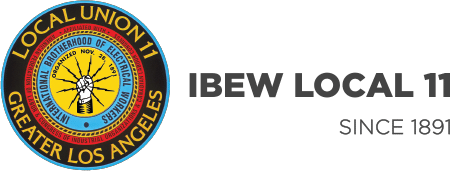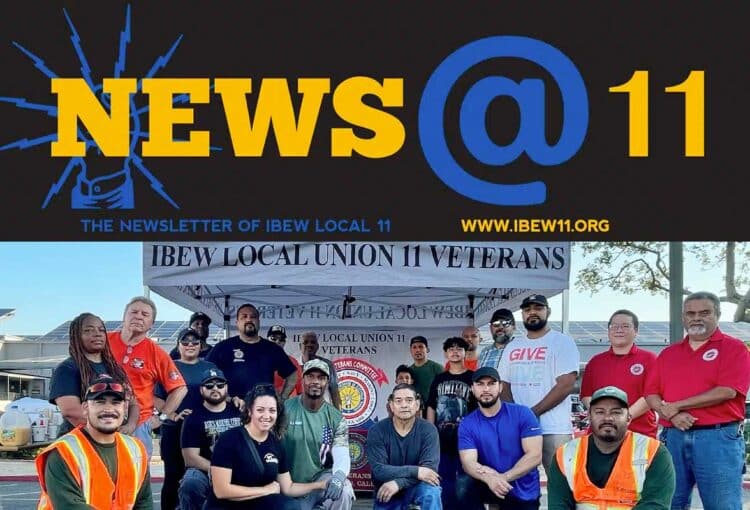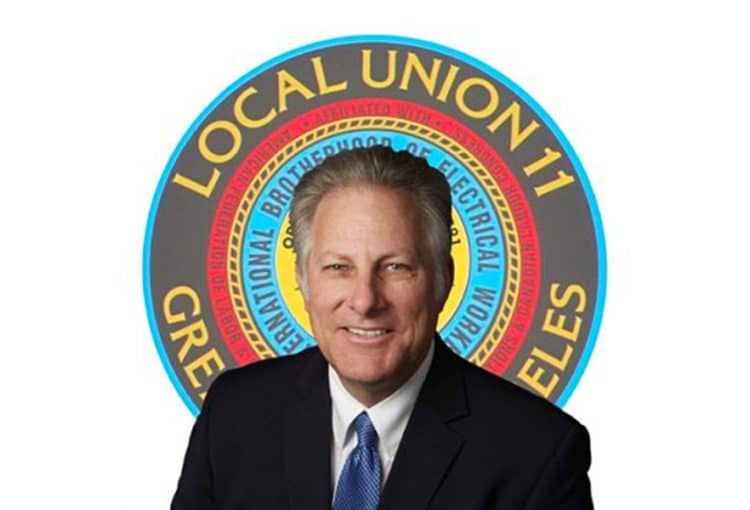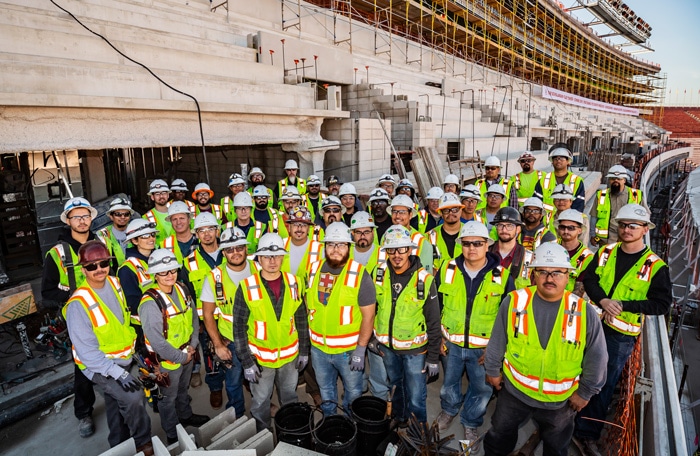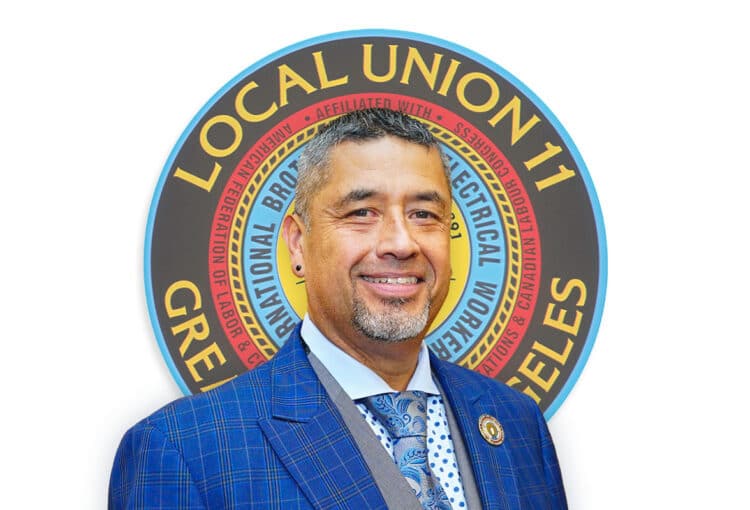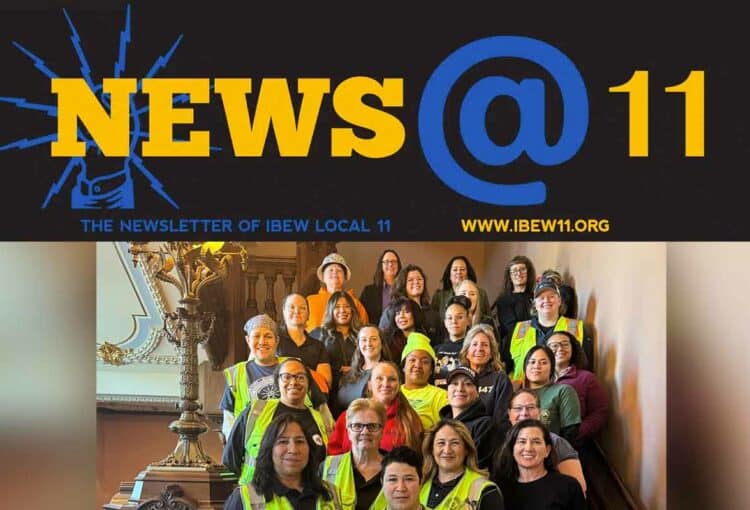Luxury Highrise Reshaping LA’s Koreatown
IBEW 11 Members Bring Hallasan Towers to Life
Rising high up above the Koreatown skyline, the 38-story Hallasan mixed-use residential tower located at the intersection of 7th and New Hampshire Avenue enjoys sweeping views of the entire city below.
Billing itself as a high-end luxury residential mixed-use building within walking distance of restaurants and bars, the Hallasan is the latest – and among the tallest – in a recent series of high-end high-rise developments along the Wilshire corridor in Koreatown.
Holland Partner Group, the developer of the steel and glass structure, broke ground on the building in September of 2020. They named the project after South Korea’s tallest mountain.
When completed, the 375-unit building will have retail shops on the ground floor, 28 floors of residential apartments above an 8-story parking garage, and a rooftop deck featuring a pool, a gym and common area. Apartments range from 600 square feet studios to expansive 2,000 square feet penthouses. The expected completion date is the spring of 2023.
Architects MVE + Partners designed the 695,600 square foot project to take advantage of the gentrified neighborhood.
Robert Hager, general foreman for HMT, the project’s electrical subcontractor, is proud of his work on Hallasan. “I was the second person on the site when it was still just a giant hole in the ground,” he says. “We started with temporary power bringing it out of the ground with just three helpers.”
Now he is leading the charge with a crew of 30.
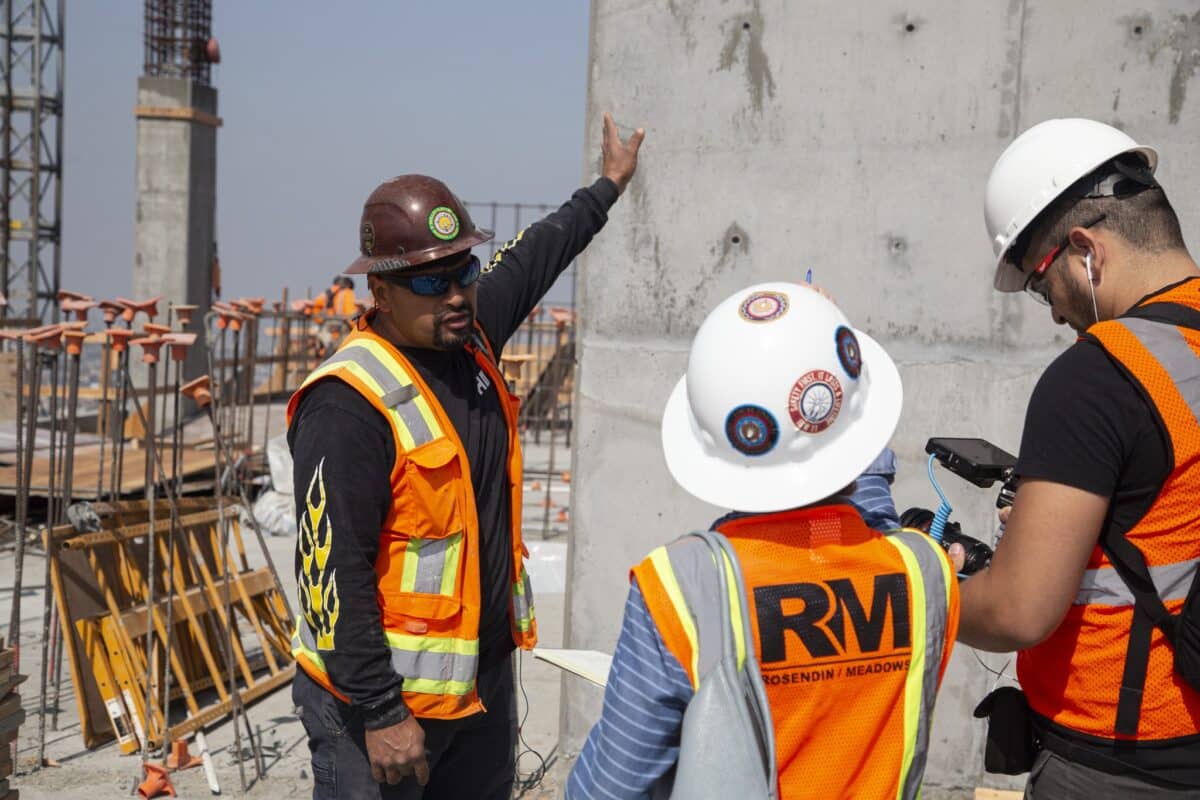
Starting construction in the middle of the pandemic certainly created its challenges, Hager notes. “Meeting deadlines during the pandemic was brutal,” he says. “At one point we had 18 guys out sick or in quarantine.”
Added to the staffing shortages caused by COVID were the regular change orders as well as supply chain issues when it came to materials.
“It slowed us down, sure, but we all just worked harder,” Hager says. “That’s what we do in the IBEW – we meet the challenge and exceed.”
Hager loves working on high rises which is fitting since HMT’s tagline is “We build skylines.” I’m proud that my children and grandchildren will be able to drive past this building and say, ‘My dad had a hand in creating that beautiful piece of art.’”
Foreman Erik Rhodas has been working at the project for the last year, moving his crew of 13 up the tower. “We have a week per floor to complete between 12 and 16 units. We’re like a train that has to run on time,” says Rhodas. “We try not to have trade stacking, but sometimes it can’t be avoided to make our schedule.”
Rhodas finds the work challenging. “It’s my first-time doing suite roughs. It’s different from the work I did previously: solar, car charging stations, lighting controls, single lines.”
It’s Rhodas’s job as suite foreman to run the crew on framing, roping, wiring, splicing, and passing inspection for the drywall to go in.
“I like to be a leader and set an example. I want my crew to want to work hard for me, so I have to set a good example. No different than for my kids at home,” he says.

Planning the Project
As project manager, Kris Bakhos started the job six months before the rest of the crew, working in the office together with the contractor, to complete all of the large purchase orders, and feeders going up the tower.
“My job is to maintain the schedule,” says Bakhos. “COVID and losing so many crew members who were out sick, was a huge challenge.”
He admits it’s nice to work on a long-term project like Hallasan. “I’ve had two-and-a-half years of job security,” Bakhos says.
According to Bakhos, there’s currently a substantial demand for quality electrical work for this kind of luxury project – everything from medium voltage to low voltage. “I’m using every aspect of my electrical career on this project,” he says. “The scope of work is very diverse. From medium voltage with big heavy gear and transformers down to lighting controls with Cat6 cables.”
Planning a high rise is like the nervous system in the body, Bakhos says.
“You have to think about what circuits are going to be hitting what floors when because once the drywall goes, you won’t have access,” Bakhos says. “I spent the first six months planning, detailing each apartment and how to wire and box it, and figuring out what circuits and loads we needed for each floor. I had to build diagrams, show diagrams and EMT. It takes a lot of planning.”
“And then of course, there’s all the changes you have to make in real time in the real world,” he adds with a laugh.
Danielle Boyer, who just turned out as an Inside Wireman in January, has been working on the project for seven months doing inside layouts, receptacles, fire alarms and cabling that goes all the way up the tower.
Her favorite part of the job? Being mobile, changing jobsites and learning new skills all the time.
“I like being on a long-term project like this where I can dig in and see all the different aspects from roughing-in to final touches at the end,” says Boyer. “Wiring transformers, DB boards, panels…I get to see the whole scope of the project from single line to rough in to trim to fire alarm.”
Boyer is proud of the work she does. “I’m proud to look at the buildings we work on and know I was part of that.”


